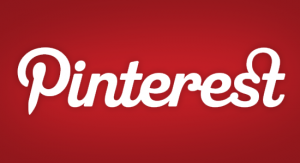Apr
17

Posted by scald on April 17th, 2012
Posted in: News From NNLM PNR, Training & Education
Sarah Caldwell is a student in the Master of Library and Information Science program at the University of Washington Information School. She is interning with the NNLM PNR office until she graduates in June. She can be contacted at scald3@uw.edu.
 So many physical objects have digital equivalents — the computer “desktop.” the email “inbox,” even the sticky note — so why not a digital pinboard? Pinterest is the latest tool for sharing web content, and it is geared specifically to images. Its popularity is growing quickly, and libraries and librarians are exploring ways to use Pinterest to engage users. On March 28, librarians and library staff at the University of Washington participated in a webinar titled “Pinterest for Museums & Libraries” presented by Joe Murphy.
So many physical objects have digital equivalents — the computer “desktop.” the email “inbox,” even the sticky note — so why not a digital pinboard? Pinterest is the latest tool for sharing web content, and it is geared specifically to images. Its popularity is growing quickly, and libraries and librarians are exploring ways to use Pinterest to engage users. On March 28, librarians and library staff at the University of Washington participated in a webinar titled “Pinterest for Museums & Libraries” presented by Joe Murphy.
So, what is Pinterest? Joe described it a number of ways: as “a social sharing and visual discovery tool,” “a way to connect people through shared tastes and interests,” “a platform for search and discovery,” and “a way to curate hopes and dreams.” That’s powerful stuff!
How does Pinterest work? Once you have an account (which is a quirky process — you actually have to invited by someone who already has an account!), you can create a board and then add images (or “pins”) to it. You can upload images from your own device or link to images on the web. You can create different boards for different topics or areas of interest — fountain pens, wildflowers, vacations, books — whatever you can imagine. At the same time, as a Pinterest user you can browse other people’s boards (and they can browse yours) and see what they find interesting. You can also choose to “follow” other boards — ones you find especially interesting or useful. When you choose to follow a board, it will appear in your list of boards so you don’t have to go searching for it again.
Here is an example of the main page of a Pinterest user–in this case, the Burlington Public Library in Burlington, WA:
And this is an example of one of the Burlington Public Library’s pinboards:
And, finally, this is one pin from the above pinboard:
Now for the million dollar question — what can libraries do with Pinterest? Joe Murphy believes that Pinterest can be an effective marketing tool for increasing the visibility of library services and extending the reach of content that a library already has online. It could be used to showcase new books, shine a spotlight on a particular collection or service, or create visual subject guides. Essentially it’s a way of using a snippet view to hook users and then lead them to the full “item” — whether that’s a reference source, event information, or a collection portal. People consume so much information visually, and visuals often attract people’s attention in a way that text doesn’t.
Another feature of Pinterest is that boards can be made collaborative, so that multiple people can contribute to them. This extends the social networking aspect of the tool and could be a rich area for libraries to explore.
We know how much libraries like metrics, and Pinterest offers some. You can see how many people have viewed, liked, commented on, or repinned a certain image (repining is similar to “retweeting” or to forwarding an email). You can also see how many followers a particular image or a particular collection has and what a particular Pinterest user has liked or looked at on your boards.
You may not be ready to jump in and create a Pinterest board for your library right away, but take a look at what other libraries are doing with this tool. I’ve included a list of links to library Pinterest boards below, and if anyone reading this post knows of interesting library Pinterest projects, please let us know.
Also, if you decide that you do want to create a Pinterest account, just request an invitation from Pinterest, or feel free to contact me. I just created an account myself, so I can invite others to join.
Let the visual discovery begin!
_____________________________________________
A sampling of libraries using Pinterest:
Ashland University Library – Instruction Resource Center (Ohio)
Blair Memorial Library (Michigan)
Burlington Public Library (Washington)
Lumen Christi College Library (Australia)
Newton Public Library (Kansas)
Oklahoma City Community College Library
For a long list of library and library-related pin boards, visit this Pinterest page — it shows all the boards being followed by the Mid Continent Public Library. You can tell which libraries are most active by the number of boards and number of pins each has. Happy browsing!